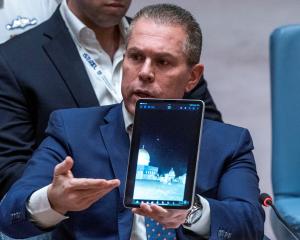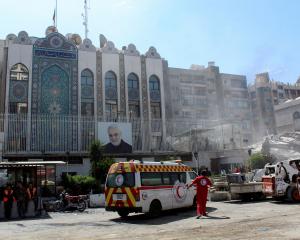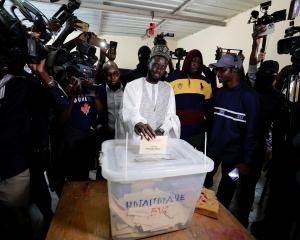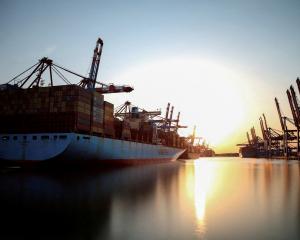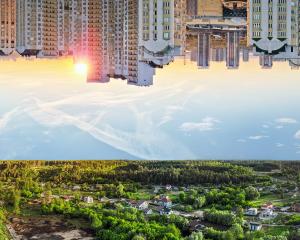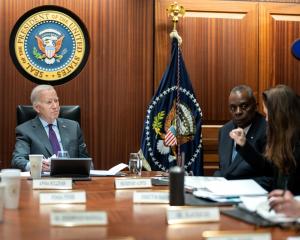Bad news on the climate front. It is clear we are likely to break through all the ''do not exceed'' limits and go into runaway warming later this century.
Greenhouse emissions have not dropped, are not dropping, and probably will not drop.
We did have a fall-back position, which was to counter the warming by geo-engineering - but now the leading technique for geo-engineering also looks like it will not work.
In a paper published this month in Environmental Research Letters, three researchers at Reading University in England have shown that trying to cool the planet by putting large amounts of sulphur dioxide into the stratosphere would lead to a 30% decline in rainfall in most of the tropics.
That would mean permanent drought conditions in countries like Indonesia, and millions would starve.
Starvation is the main impact that higher average global temperatures will have on human beings, as they will cause a big loss in food production, particularly in the tropics and subtropics.
But the standard assumption was there would still be as much rain in the tropics as before. Maybe even too much rain, as the heat would mean higher rates of evaporation and more powerful tropical storms.
What Angus Ferraro, Ellie Highwood and Andrew Charlton-Perez have done is to use several climate model simulations to examine the effect of geo-engineering on the tropical overturning circulation.
This circulation is largely responsible for lifting water vapour that has evaporated at the surface high enough up into the atmosphere that it turns back into water droplets and falls as rain. If the circulation gets weaker, so does the rainfall.
Putting sulphur dioxide into the stratosphere to cut the amount of incoming sunlight and reduce heating at the surface was first suggested by Paul Crutzen, a Nobel Prize-winning atmospheric chemist, in 2006.
At that time, talking about geo-engineering was taboo among scientists, because they feared that if the general public knew the heating could be held down that way, they'd stop trying to curb their greenhouse gas emissions.
Prof Crutzen violated the taboo because countries and people were NOT cutting their emissions, and there was no reasonable prospect that they would. (This is still largely the case, by the way.)
So the world definitely needed a Plan B if we did not want to see a planet that is 4degC hotter by the end of the century.
Prof Crutzen pointed out that large volcanoes, when they explode, put substantial amounts of sulphur dioxide gas into the stratosphere.
That causes significant cooling at the surface for one or two years, until it all comes down again - and it does no apparent harm in the process.
The last big volcano to explode, Mt Pinatubo in the Philippines in 1991, reduced the average global temperature at peak by half a degree C.
Human beings could also put sulphur dioxide into the stratosphere to hold the temperature down, Prof Crutzen said.
The ice caps would not melt, our agriculture would continue to get the familiar weather it needs, and we would win ourselves more time to get our emissions down. We still have to get our emissions down in the end, he stressed.
There was so much outrage at Prof Crutzen's suggestion that he had a nervous breakdown, but then lots of other scientists came out of hiding to admit that they also thought the human race needed a fall-back position.
Various other proposals for holding the temperature down were put on the table, and by now there are dozens of them, but the idea of putting sulphur dioxide in the stratosphere still led the field. Until now.
But the Reading University scientists have discovered a hitherto unsuspected side-effect of this kind of geo-engineering. The sulphur dioxide particles do not just reflect back a portion of the incoming sunlight from above.
They also reflect a portion of the long-wave radiation (heat) coming back up from the surface, and that heats the top of the troposphere.
The troposphere is the lower part of the atmosphere, where all the weather happens. If you heat the top of the troposphere, you reduce the temperature difference between there and the surface, so the tropical overturning circulation weakens.
That means less water vapour is carried up, and less rain falls back down. Result: drought and famine.
This is exactly the kind of scientific investigation Prof Crutzen wanted.
He understood clearly that we were venturing into dangerous territory when we start intervening in a system as complex as the climate, and he stressed that what was needed was lots more research before we have to gamble on geo-engineering to halt an imminent disaster. But it's a very discouraging conclusion.
The sulphur dioxide option was the cheapest and seemingly the best understood option for holding the temperature down.
Many people were glad it was there, as a kind of safety net if we really don't get our act together in time to halt the warming by less intrusive means. Now there's no safety net.
Gwynne Dyer is an independent London journalist.

